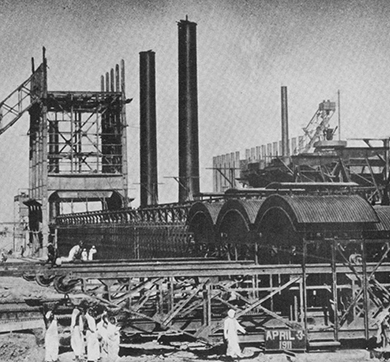September 2018 | 2791 words | 11-minute read
Since its inception in 1868, the Tata group has formed the backbone of India’s growth story with sweeping yet invisible contributions. For the last 150 years, Tata companies have been an invisible force driving progress for the nation, as well as the aspirations of India’s billion-plus people. Here's how we've been making an impact.
With 500,000 orders being executed per second, the Bombay Stock Exchange (BSE) is the fastest stock exchange in the world. With more than 1,700 listed companies whose market capitalisation exceeds $2 trillion, the National Stock Exchange (NSE) is not only India’s largest stock exchange by transaction volume but also among the top three bourses in the world. The only commonality they share is that their systems and software are invisibly driven by Tata Consultancy Services (TCS), the world’s second most valuable information technology company.
And it’s not exchanges alone. The core banking system that services 750 million retail customer accounts of the State Bank of India (SBI); 23,840+ rural and urban cooperative bank branches connected through cloud-based technology platforms; Real-Time Gross Settlement (RTGS) platform of Reserve Bank of India (RBI); Securities and Exchange Board of India’s (SEBI) surveillance systems and real-time Income Tax collection and analytics, are among some of the key pieces of India’s financial backbone that is driven by Tata.
Behind the TCS-run software and systems are high-speed data pipes that move data across the country and the world in the blink of an eye. They are run by Tata Communications whose network can transfer data from Silicon Valley to Singapore in a mere 180 milliseconds. It also connects customers to 99.7 percent of the world’s GDP.
Or consider the electricity required to power the aspirations of modern India. 120 GW of the country’s aggregate installed energy capacity is engineered or generated by us. 500 million people have benefited from the power generated at these plants, including the Tata Power plant in Trombay, which generates the electricity powering the BSE.
And in building and fuelling those power plants our steel plays a vital part. From the equipment needed for mining coal for thermal power to reinforcing the dams that produce hydro-electricity — like the iconic Bhakra and Nangal dams — and building the panels that produce solar power, our steel is in everything.
“In fact, not many people know that a little more than a third of infrastructure projects in India today use our steel,” says a proud Peeyush Gupta, vice president, marketing and sales, Tata Steel.
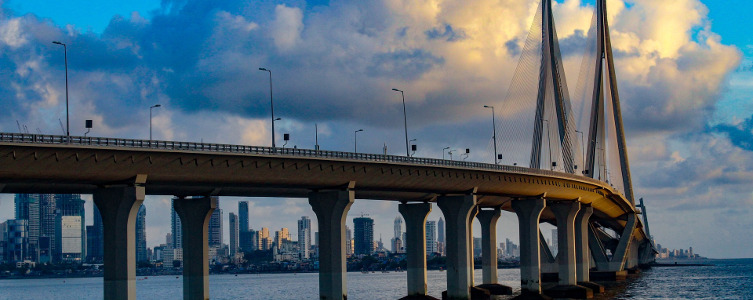
Sinews of steel
“Jamsetji Tata’s vision in many ways determined India’s future,” says Gupta. “The consumption of steel, a key ingredient in agriculture, industry and infrastructure, is linked closely to the economic development of a country.”
By the 1930s, we were providing 72 percent of India’s requirement of steel, covering the gamut from defence applications, to the railways and iconic projects like the Howrah Bridge. 23,000 tonnes, or about 85 percent of the steel used to build the bridge that defines the Kolkata skyline to this day, came from Jamshedpur.
This role intensified after 1947. A newly independent India needed an agricultural and industrial revolution, neither of which could happen without machinery and power, or our steel.
Steel was essential to manufacturing agricultural tools. It was essential to rapidly scaling down the import of capital goods — needed to industrialise India — from a brutal 90 percent in 1950 to about half of that in the 1960s. It was essential to building factories, dams and power plants. “Much of it came from us, the largest steel maker in the country then,” Gupta says. “We have come a long way, but our pivotal role in nation building hasn’t changed.”
Take for instance the fact that we move India forward. Quite literally.
- Our steel and key components are in every model of Boeing and Airbus civil airliner in production today.
- It is in two-thirds of the country’s metro rails, flyovers and bridges, including landmark ones like Kolkata’s second Hooghly bridge and Mumbai’s Bandra-Worli Sea Link.
- Every third tyre made in the country uses our steel. Almost every passenger car made in India has our steel. Three out of four commercial vehicles (CV) in India run on chassis made of our steel.
- Two-thirds of metro rail in the country are made with our steel. Key metro networks like Delhi, Mumbai, Lucknow, Ahmedabad, Chennai and Kochi have also been built with our expertise.
Economic backbone
Just as invisible, but important, is the Tata group’s impact on India’s economic backbone.
It begins with your wallet: The ₹2,000 note is printed at a factory designed by us (fun fact: nearly all the 1, 2, 5 and 10 penny coins in circulation in the United Kingdom also have the Tata touch; they are made of our steel).
And ranges up to the country’s coffers, which we support by providing the system for e-filing of key taxes. In addition, Tata companies together create wealth for the nation by contributing ₹47,196 crore (2.24 percent of the total collection in 2017) in taxes to the government of India’s finances (₹21,08,118 crore).
“We have been instrumental in running the economic backbone of the country, covering the stock exchange, the regulators, the depositaries, manufacturing, retail, utilities — that is what our expanse is,” says Ujjwal Mathur, vice president and head of India business, TCS. “Our internal assessment is that we touch the lives of one in every two citizens of the country.”

Our technology powers the digital network of more than 100 banks, including the country’s largest. At the SBI alone we provide core banking solutions to 750 million+ accounts, which is more than double the population of the United States.
Mathur says, “We have been instrumental in riding with both the stock exchanges through their journey of growth. We work with the RBI on quite a few of their platforms, including the RTGS platform. We have been part of the SEBI’s surveillance system. We also work with the National Payment Corporation of India.”
And, he adds, “Little known to the world, we also cover the expanse of whatever is available in the telecommunications industry in India.”
In fact, it’s not just India. The Tata group also connects the world’s economy.
“What people can’t see is that Tata sparks an infinite universe of connections for people across the globe,” says Vinod Kumar, chief executive officer (CEO) and managing director (MD), Tata Communications. “We operate the largest wholly owned and most advanced sub-sea fibre network, which carries nearly 30 percent of the world’s internet routes, connecting 200 countries and territories. Four out of five mobile subscribers across the world are also connected through it.”
Powering India
“As the country has grown, we have made sure that electricity, the invisible force that powers the nation, has always been available to fuel development,” says Praveer Sinha, CEO and MD, Tata Power, India’s largest integrated power company.
The Tata group has built 13,000 km+ of transmission lines, the backbone of India’s high-capacity power transmission. “We have been responsible for linking the southern grid with the central and the eastern grid with the northern,” says Vinayak Deshpande, MD, Tata Projects. “Most key cities in Andhra Pradesh, Telangana, Tamil Nadu and Karnataka get their electricity on this backbone. Eastern India and Central India depend on our 800Kv HVDC lines. Leh, Kargil and other upper reaches of Jammu and Kashmir are connected by our transmission infrastructure.”
We play a particularly powerful role in powering India’s financial capital. Or unique islanding system, which gives an assured and uninterrupted supply of electricity, has powered Mumbai’s growth for most of the past century. It helped bring electrification to Mumbai’s lifeline, the railways, and supports key installations like the Bhabha Atomic Research Centre.
Our power generation and distribution arms also serve regions of Gujarat, Rajasthan, Maharashtra, Delhi, Haryana, Punjab, West Bengal, Uttar Pradesh, Odisha, Madhya Pradesh, Jharkhand and Bihar.
“Electricity is essential to build a fast-growing economy,” says Sinha. “As India looks towards rapid digitisation, industrialisation and a growing population, we look to shape the future.”
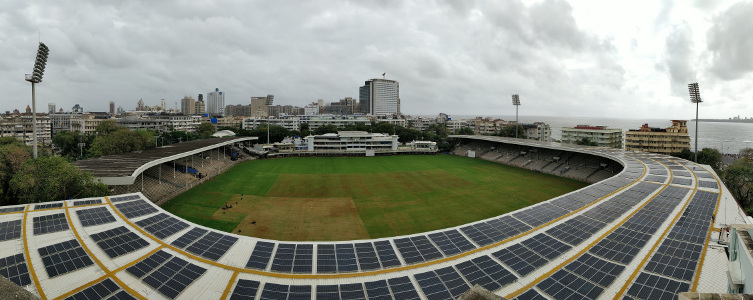
A cleaner future
With this in mind, the Tata group has already taken the lead in clean and sustainable ways of generation and consumption of power (one of our latest achievements is installing the world’s largest solar rooftop project on a cricket stadium, in Mumbai). We are not only India’s largest integrated solar player, we have also designed 80 percent of the nuclear power projects.
“40 percent of our current generation portfolio is from clean energy sources,” Sinha notes. Clean energy will be a key feature of the smart cities of the future, the drive for which is also being led by the Tata group. “Our work on India’s first smart city, the Gujarat International Financial Tech, is still considered a benchmark in terms of futuristic cities,” says Amit Sharma, MD, Tata Consulting Engineers (TCE). “Now, 12 more cities will have access to smart living through the smart city plan engineered by us.” These include Guwahati in Assam; Raipur in Chhattisgarh; Bhopal and Satna in Madhya Pradesh; Ahmedabad, Surat, Vadodara, Gandhinagar and Dahod in Gujarat; Shivamoga in Karnataka; Agartala in Tripura; and Rourkela in Odisha.
We are also engineering the brownfield upgrade of at least 49 cities, and have the ability to transform the entire ecosystem. “When you talk of smart cities, the more you look at the larger ecosystem, the better it is. The more you chop it up into smaller pieces, the more problematic it gets,” says Banmali Agrawala, president, Infrastructure, Defence and Aerospace, Tata Sons. “Our view of smart cities is that there are five basic elements that can improve life, and we can provide all five of them in totality and transform a city.” The first is governance, where we have a large offering of e-governance covering the gamut from managing land records to managing police stations. The second is mobility, where we have the ability to build metro networks and manage the whole ecosystem of electric vehicles.
“The Tata ecosystem gives us a unique advantage,” says PB Balaji, chief financial officer, Tata Motors. “We have the products, charging stations, technology, and the business model that can disrupt the way people drive, own and share cars. In fact, not just cars, buses, light commercial vehicles and small commercial vehicles will also move onto the electric architecture.” The third is electricity. “This is basically how do you make the supply of electricity smarter, reliable and affordable,” Agrawala elaborates. “It starts from purchasing power and distributing power, making sure that customers get reliable power, to helping the customer manage power requirements efficiently and billing them. We manage that complete ecosystem extremely well.” The fourth and fifth elements are water and waste management and smart and affordable housing, he adds, noting, “There are only a few people like us who can provide this kind of a wholesome solution.” For example, More than 70 percent of what’s underground in Mumbai — water transmission to waste management — has been designed by the group.
Defending India
The Tata group has done several things to help the Indian defence forces historically, starting with World War I, when our steel helped build arms and ammunition. Today, we play an important role in shoring up India’s defences across land, water and air. “We have been developing weapons systems and control systems for all the big artillery guns,” says Banmali Agrawala, president, infrastructure, defence and aerospace, Tata Sons.
This includes the Pinaka Multi-Barrel Rocket Launcher, which was tested in the Kargil War; the Akash Army and Air Force Missile Launcher; Prahaar Mobile Launcher System and other surface-to-air missile launchers and advanced air defence mobile launcher systems. We have also contributed to the design and development of Combat Management Systems for the Medium Range Surface-To-Air Missile technology.
“On the aerospace side, we are plugged in as sole suppliers to all the world majors like Boeing, Airbus, Lockheed Martin,” says Agrawala. “What all the building of structure and components has essentially done is given us the capability to build a complete aircraft. We have partnered with Lockheed to make the F-16 aircraft in India. We could also be making the C-295, the replacement for the Avro (the transport planes used by the Indian Air Force). These are complete aircraft.”
Technologies developed by the Tatas have also addressed the unique needs of the Indian armed forces for more than two decades. We have done mission critical software development for electronic warfare for all branches of the armed forces, executed the Indian Navy’s Surface Surveillance Radar project and delivered machinery control systems for the Indian Navy and the Integrated Materials Management Online System for the IAF.
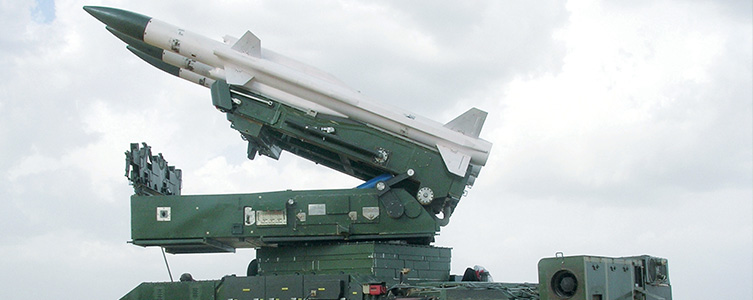
Space dreams
Getting India future ready, however, is incomplete without engineering her space dreams too.
As futurist and theoretical physicist Dr Michio Kaku, who delivered the JRD Tata Memorial Lecture at the JRD QV in Mumbai in July, says, “Humanity has almost gone extinct many times in our history. For example, 70,000 years ago, a blink of an eye ago, something killed almost all homo sapiens on Earth. A volcano called Toba erupted in Indonesia, we think. It was the greatest eruption in the last billion years, and we think it wiped out many species. That’s why we need a space programme. We need an insurance policy.”
Terraforming Mars is widely considered the first step of that insurance policy. And when India launched her Mars mission, we not only contributed to building the launch vehicle, but also to the design and fabrication of the data control hardware in Mangalyaan, to help it access data from the payload and transmit it to the ground station.
When ISRO launched its heaviest rocket, the GSKV-Mk III, it did so from a Mobile Launch Pedestal designed by us. We are also helping engineer ISRO’s PSLV integration facility, which is aimed at increasing the PSLV launch frequency from six to 15 per year.
“We are invisible,” says Amit Sharma of TCE, “but we are involved in nation building at every level from basic water and waste management to energy, power, military and space.”
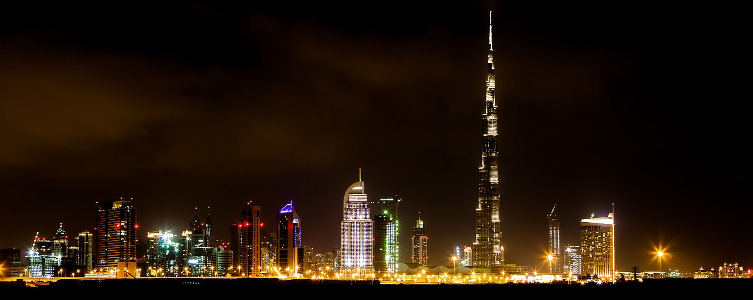
Did you know
- We are the connectivity provider for Formula 1 across 19 races and 5 continents. We have also helped build the F1 Yas Marina Grand Prix Circuit in Abu Dhabi.
- Most of the complex and powerful radio, optical and cylindrical telescopes in India, including Asia’s largest optical telescope and the world’s largest giant metre wave radio telescope, have been designed by us.
- It is our technology that facilitates the exams for Indian Railways, better known as the world’s biggest recruitment drive. In fact, some of India’s biggest entrance exams, including the IIMs and IITs, are conducted on our platform.
- We facilitate your travels around the world. The Tata-run Passport Seva Kendras have reduced the average issuance time from 60 to six days and served more than 150 million+ citizens in India and abroad.
- 95 percent of the biggest rail company in England, the National Rail Network, runs on tracks made of our steel.
- There is a lot of our steel in the world’s tallest building, the Burj Khalifa, which stands in the middle of a desert, and stays cool because of us.
- Our steel contributed to the making of Mumbai’s Chhatrapati Shivaji Maharaj International Airport, ranked the World’s Best Airport at the Airport Service Quality Awards in 2017. We designed the passenger and staff experiences that made it happen, and the airport also runs on electricity that we supply.
- Our Internet of Things network in India will be the world’s largest network of its kind, touching over 400 million people to create an end-to-end connected ecosystem. By the time you finish reading this sentence, data would have travelled around the world on our network 16 times.
- One-third of ride-share fleets in India use Tata cars. India even goes to school on a Tata bus; we build one out of every three school buses in the country.
- We are making India cleaner! We have revived the Dravyavati river in Rajasthan; what had become a narrow, sewage-carrying drain has been transformed across a 47-km stretch. We’re also managing the Clean Ganga project, which impacts the lives of 21.5 million people across 58 towns.
- We quench your thirst: 20 percent of water that India drinks comes through a facility designed by us. There is a whole lot of Tata in your wine glass too; 80 percent of India’s grapes grow on wires we supply.
- We bring food to your table: We enrich 80 percent of India’s arable land; our steel is in every third agricultural hand tool and borewell; we have turned salt, the most basic of ingredients, into a carrier of micro-nutrients; every fourth stainless steel utensil in India is made of our steel; one in every two LPG cylinders is made from our steel.
—Monali Sarkar








